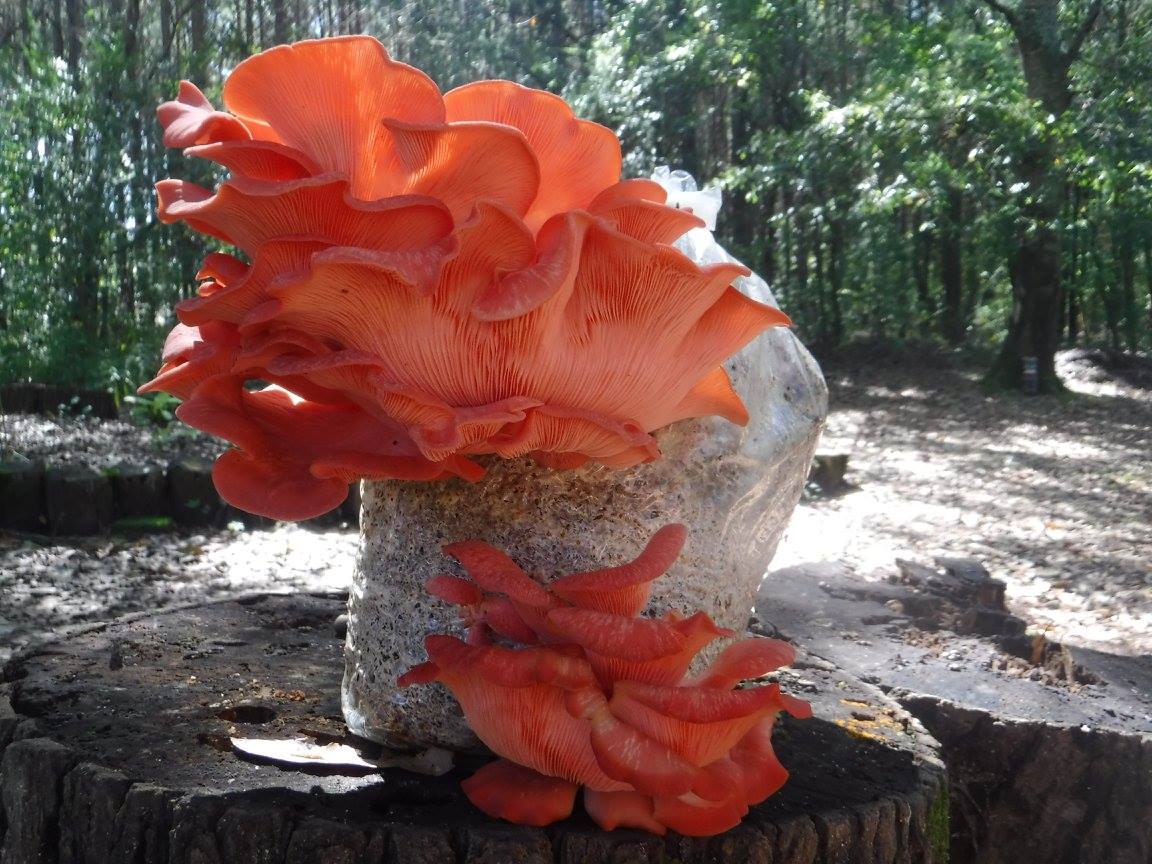by Angie Lavezzo, CFSA Communications Coordinator | Monday, Nov. 1, 2021 –
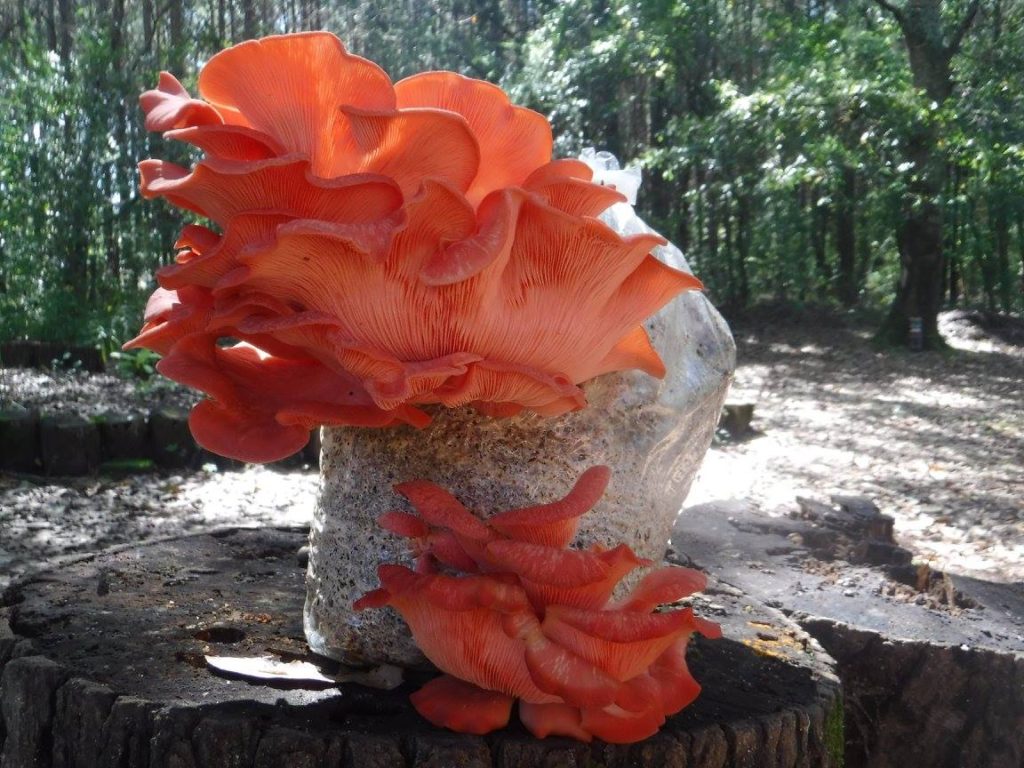
Pink Oyster Mushrooms in Grow Bag
There are so many great reasons to grow mushrooms for yourself, your family, and your customers that it’s hard to choose just five. Mushrooms are relatively easy to grow. So much so that mushroom farms exist in all 50 states. While you don’t have to become a full-fledged mushroom farm, they can be an excellent addition to diversify your garden crops or farm income.
Growing enough mushrooms to feed your family and extra to sell at a farmers market or to restaurants will take very little of your time. In fact, after the initial setup, mushrooms may end up being your best-yielding crop when you compare the time spent caring for your logs and bags to the amount of food you get in return.
Before we dive into the whys, let’s review the basics. How do mushrooms grow? Some types of mushrooms are grown in soil but tend to be more complicated to start with. For beginners, inoculating logs or sterilizing a growing medium like sawdust or wood chips, inoculating the medium, and packing it into plastic bags are more accessible projects. Both log and bag methods have different advantages and disadvantages that deserve consideration.
To compare mushrooms to vegetable crops, think of mycelium like the roots of your mushroom crop—lots of activity happens in the growing medium that you can’t see before it fruits. As the mycelium grows, it’s referred to as running in the industry. Mycelium will run through the growing medium completely before it begins to fruit to gauge how much food source is available. Grow bags are generally kept inside and fruit more frequently than logs. The loose material allows the mycelium to move quickly, and fruiting will start within a few months. Logs, because of their density, can take much longer. Depending on the type of wood and mushroom used to inoculate, it can take anywhere from six months to two years for fruiting to begin. Logs can last for many years before they stop fruiting, though. In contrast, growing bags need replacing approximately every year to keep the fruit production cycle going.
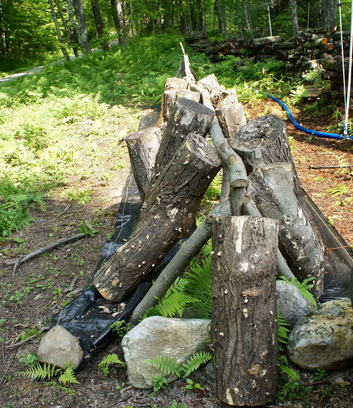
You Choose How Much Money to Invest
You can start growing mushrooms with very little up-front investment. For effective inoculation, logs must be green and freshly cut, no more than 2-4 months old, depending on the season. If you own property and have tree trimming to do, logs can be obtained this way. They can also be found for little to no money using online selling platforms like Craigslist. Need outside help? Get in touch with a local tree-trimming company and let them know what you’re looking for. You can also ask the company you purchase the mushroom spawn from what types of wood will be best for the different types of mushrooms you are interested in growing.
In fact, after the initial setup, mushrooms may end up being your best-yielding crop when you compare the time spent caring for your logs and bags to the amount of food you get in return.
Arguably, growing mushrooms in bags is the more sustainable option due to this method’s ability to use recycled substrate. Accessible to all budgets, substrate-grown mushrooms are grown on free material like woodchips, coffee grounds, or spent grains from breweries. You can spend money on bags, but crops can be successfully grown using recycled plastic grocery bags as well.
As far as investment goes, the main expenditures are purchasing spawn to inoculate your material and your time setting up your operation. That’s not to suggest there isn’t time spent on maintenance, but it is minimal. Your returns can be well worth it, as fresh mushrooms currently sell at farmers’ markets for between $12-$25 a pound, depending on the variety. Dried mushrooms fetch similar prices when accounting for the weight difference. This high market price is unlikely to go down any time soon and can be a significant profit over the production life of your mushrooms.
Grow Mushrooms in Unused Areas
If you think about where mushrooms grow naturally, those areas are typically not used to grow traditional vegetable crops. Mushrooms’ low labor and environmental requirements can be an excellent opportunity to use areas that are wooded or too shady to grow anything else. Setting up mushroom logs or building a simple structure to protect bags of substrate-grown mushrooms can be done in an afternoon and can last for years.
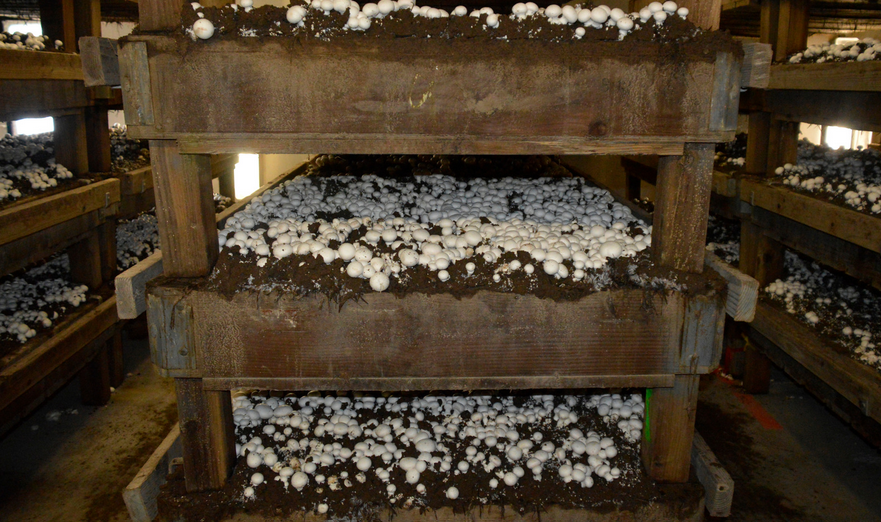
White Button Mushrooms Grown on Soil
Dried or Fresh, Mushrooms Are in High Demand
Versatility is one of the best things about growing mushrooms as a market crop. What can’t be sold fresh can be dried and then sold packaged throughout the year. Mushrooms are easy to dry; some farmers don’t even bother selling them fresh and take harvests straight to the dehydrator. The market for fresh or dried mushrooms is strong. Sales have been climbing steadily over the past decade, with sales for the 2019-2020 mushroom crop at a whopping $1.15 billion in the U.S.
Provide Another Source of High-Nutrient Food to Your Family & Customers
Mushrooms are extraordinarily versatile to cook with—happy as the star of a dish or in a supporting role. Their meaty texture and savory, umami flavor make them beloved by vegetarians and meat-eaters alike. The protein in mushrooms contains all nine essential amino acids. Fiber-filled, with significant anti-inflammatory and immune-boosting benefits, mushrooms are helpful with graceful aging. With so many benefits, mushrooms are a tasty crop that you can feel good about offering your community. A bonus for how cool and versatile mushrooms are, they are also being used to make fabric, new types of biodegradable “plastic,” and there are exciting studies of mycelium species that show the ability to eat plastic. There’s promising research exploring mushrooms as medicine for mental health. All these combined are giving mushrooms a well-deserved moment in the spotlight.
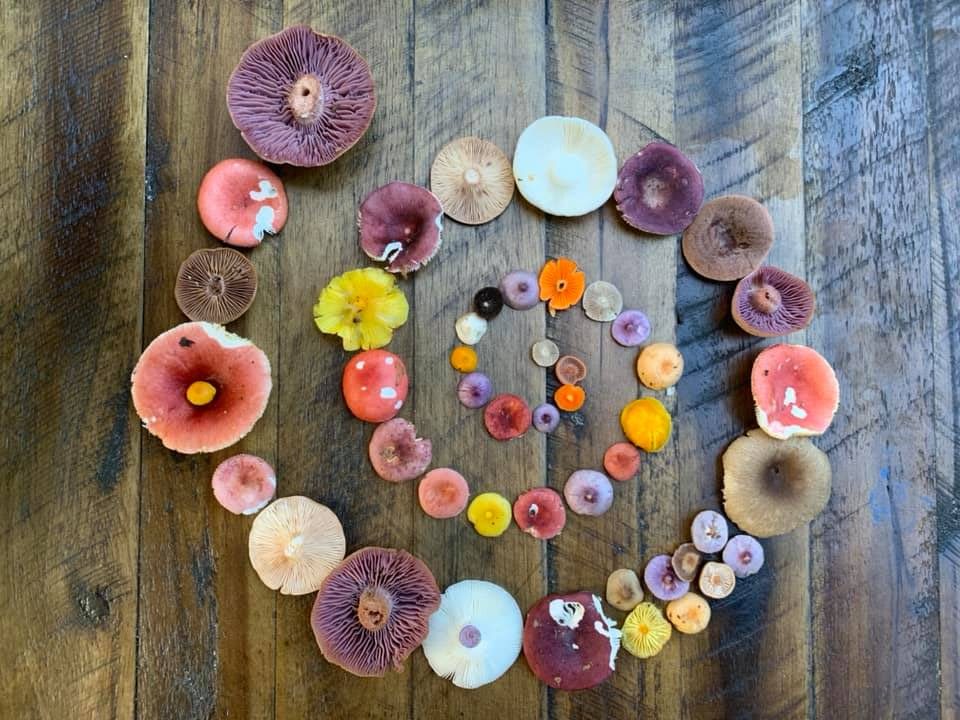 Mushrooms in a Spiral, Photo Credit: Mushroom Mountain
Mushrooms in a Spiral, Photo Credit: Mushroom Mountain
Build Soil and Amend Animal Feed
Mushrooms are the world’s composters, and growing mushrooms means you can have a steady supply of high-quality organic material ready for your garden beds, fields, or to add to your compost pile. Like spent brewery grains, spent mushroom substrate can also be an excellent addition to animal feed, providing extra nutrients and antioxidants.
Learn How to Cultivate Mushrooms In-Person
Join our half-day intensive, Introduction to Mushroom Cultivation on the Farm, with Tradd Cotter at Mushroom Mountain in Easley, SC on Nov. 15, 2021. Tradd is the co-founder of Mushroom Mountain and author of Organic Mushroom Farming and Mycoremediation. All aspects of what it takes to get started growing and maintaining production will be covered. This is a unique, hands-on opportunity to learn from a mushroom farmer with decades of experience.
In addition to Introduction to Mushroom Cultivation on the Farm, Tradd will lead two virtual workshops as part of the 2021 Sustainable Agriculture Conference: Four Easy Ways to Grow Mushrooms at Home and Cultivating Mushrooms on Pasteurized & Sterilized Substrates.
Join Us at SAC 2021
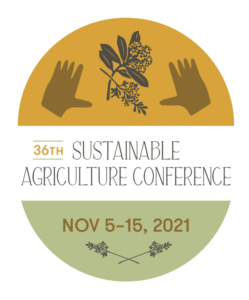 This November, CFSA’s Sustainable Agriculture Conference will virtually gather a community of people who are growing a sustainable local food system in the Carolinas. Please join us at SAC 2021 to learn, share knowledge, make valuable connections, and “see” old friends. If you haven’t been yet, we invite you to join us this year.
This November, CFSA’s Sustainable Agriculture Conference will virtually gather a community of people who are growing a sustainable local food system in the Carolinas. Please join us at SAC 2021 to learn, share knowledge, make valuable connections, and “see” old friends. If you haven’t been yet, we invite you to join us this year.
Learn more about this year’s conference by perusing this SAC 2021 program. Registration runs through Nov. 15, so it’s not too late to sign up!


